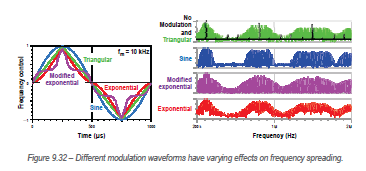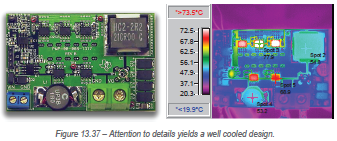I joined Texas Instruments in July 2003, working in marketing for power management. During my first week on the job, my boss introduced me to Bob Mammano like this: “Tim, I’d like to introduce you to Bob Mammano, the inventor of the first integrated circuit [IC] designed for switch-mode power-supply control.”
Bob was managing TI’s worldwide Power Supply Design Seminars at the time and was in our office to meet with our technical experts. It was quite a memorable moment to meet an icon of the power-supply industry.
Fast forward to January 2016 – my boss explained a new project that he wanted me to manage like this: “Tim, I’d like you to work with Bob Mammano and create a power-supply textbook that draws upon the technical content from our three decades of Power Supply Design Seminars.”
My background is product marketing for power-management ICs, but I have very little knowledge of publishing books.
We introduced “Fundamentals of Power Supply Design” in March 2017. Written for new engineering graduates as well as seasoned power supply designers, this textbook features theory, equations and actual circuit-design techniques. It is a useful reference of power-supply technology for designers of all levels of experience.
Often considered “the father of the PWM controller industry,” Bob is a pioneer in the power electronics field with more than 50 years of experience in analog power control. He became heavily involved in the TI Power Supply Design Seminar, both in the preparation of topics and in their presentations worldwide. It was the materials from these seminars that served as the framework for the book.
To provide some perspective on the scope of the work that went into producing the book, “Fundamentals of Power Supply Design” has 331 pages of text, 81,595 words, references 58 seminar topics, and hundreds of figures and equations. Some of TI’s best power systems engineers reviewed Bob’s writing – experts themselves in selected topics whose contributions ensured that the material was up to the high standards we were aiming for.
For example, Robert Kollman was reactivated out of retirement from a career as head of TI’s Power Design Services group. I’ve known Robert for as many years as I have been with TI and his contribution to the power-supply industry is vast and well known. Robert was the chief technical editor of the book and also authored Chapter 13, “Power Supply Construction.”
The book begins with the basics of switch-mode power-supply design such as voltage regulation and power-supply components and then expands into more advanced topics such as topology selection, control algorithms and power-supply construction. Topics are well supported by theory and equations, with actual measurements used throughout to illustrate practical example circuits.
Figure 1, featured in Chapter 9, is a good example of how four-color printing helps in displaying measurements taken for frequency spreading.
We introduced “Fundamentals of Power Supply Design” in March 2017. Written for new engineering graduates as well as seasoned power supply designers, this textbook features theory, equations and actual circuit-design techniques. It is a useful reference of power-supply technology for designers of all levels of experience.
Figure 1: Different modulation waveforms have varying effects on frequency spreading
Chapter 7 tackles one of the more difficult topics power-supply designers must work with: magnetic component design (Figure 2).
Figure 2: Table of contents: Magnetic component design
Chapter 13 uses actual circuit examples to illustrate power-supply construction. Figure 3 shows thermal imaging of an actual board.
Figure 3: A solution for cooling a power supply through the PCB surface
Interesting historical and behind the scenes facts give the subject matter overall context. For example, Bob chronicles the time they created Under Voltage Lock Out (UVLO). When designing the first PWM control chip, Bob thought they had designed in all the control functions required, and initial testing in several power supply applications seemed to confirm success. However, shortly after releasing the first prototype, they received word that a customer’s system had a very slow turn-on time and both output drivers came on when the chip voltage was slightly lower than that required to make the timing circuitry functional. This led Bob and the team to invent a new function- Under Voltage Lock Out (UVLO) – which of course is now an obvious inclusion in every controller.
From power supply basics, such as voltage regulation and power component selection to advanced topics such as magnetics design, minimizing EMI and topology selection, “Fundamentals of Power Supply Design” is a must-have resource for both new engineers and seasoned power supply designers. Get a copy of “Fundamentals of Power Supply Design” and let me know what you think.

















